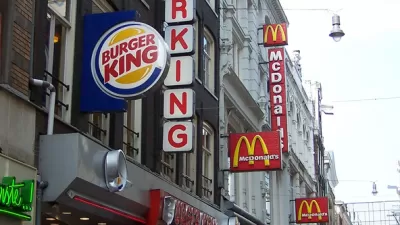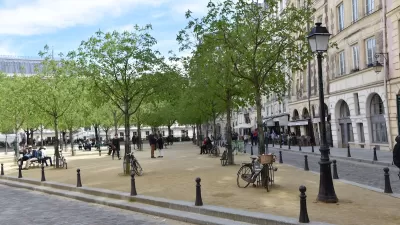Climate controlled public places where the elderly, cost-conscious and indigent are welcome to spend a few hours are hard to find. Tensions have erupted at McDonald’s restaurants in NYC between customers seeking a refuge and business interests.

"Behind the Golden Arches, older people seeking company, schoolchildren putting off homework time and homeless people escaping the cold have transformed the banquettes into headquarters for the kind of laid-back socializing once carried out on a park bench or brownstone stoop," observes Sarah Maslin Nir. But restaurant managers and franchise owners aren't too keen on the adoption of their restaurants as "[coffeehouses] for the people." A recent episode at a McDonald’s in Flushing, Queens, which resulted in management calling the police on a group of older Koreans, illustrates what can happen when these interests collide.
“As long as there have been cities, these are the kind of places people have met in,” said Don Mitchell, a professor of urban geography at Syracuse University and the author of “The Right to the City: Social Justice and the Fight for Public Space.” “Whether they have been private property, public property or something in between,” he said, “taking up space is a way to claim a right to be, a right to be visible, to say, ‘We’re part of the city too.’ ”
Sociologists such as Ray Oldenburg argue that "third places" like cafes and coffeehouses are central to local democracy and community vitality. "But the leisurely cafe culture and the business plan behind fast food are in opposition," notes Maslin Nir.
FULL STORY: The Food May Be Fast, but These Customers Won’t Be Rushed

Study: Maui’s Plan to Convert Vacation Rentals to Long-Term Housing Could Cause Nearly $1 Billion Economic Loss
The plan would reduce visitor accommodation by 25,% resulting in 1,900 jobs lost.

Placekeeping: Setting a New Precedent for City Planners
How a preservation-based approach to redevelopment and urban design can prevent displacement and honor legacy communities.

Using Old Oil and Gas Wells for Green Energy Storage
Penn State researchers have found that repurposing abandoned oil and gas wells for geothermal-assisted compressed-air energy storage can boost efficiency, reduce environmental risks, and support clean energy and job transitions.

Washington State Plans Ambitious ‘Cycle Highway’ Network
The state is directing funding to close gaps in its existing bike network and make long-distance trips more accessible.

Homeowners Blame PG&E for Delays in ADU Permits
The utility says it has dramatically reduced its backlog, but applicants say they still face months-long delays for approvals for new electrical work.

Rethinking Wildfire Defense: How a Landscape Approach Can Protect Neighborhoods
Post-fire analysis of the Eaton Fire reveals that a landscape approach — including fire-resistant vegetation, home hardening, and strategic planning — can help reduce wildfire risk, challenging assumptions that trees and plants are primary fire hazards.
Urban Design for Planners 1: Software Tools
This six-course series explores essential urban design concepts using open source software and equips planners with the tools they need to participate fully in the urban design process.
Planning for Universal Design
Learn the tools for implementing Universal Design in planning regulations.
Borough of Carlisle
Caltrans
Heyer Gruel & Associates PA
Institute for Housing and Urban Development Studies (IHS)
City of Grandview
Harvard GSD Executive Education
Salt Lake City
NYU Wagner Graduate School of Public Service
City of Cambridge, Maryland





























